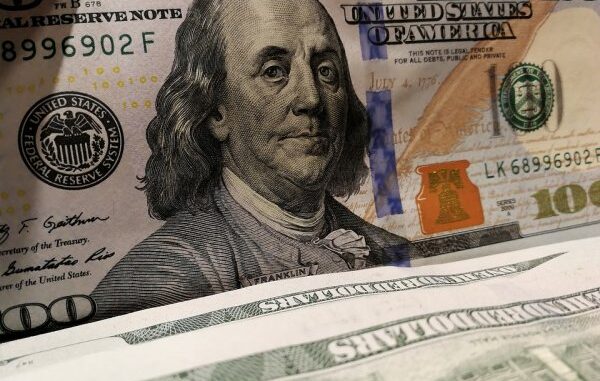
Hyperinflation – an Innocuous Mathematical Equation
People hear the word “hyperinflation” and assume it is a bad thing. However, it is just an innocuous mathematical equation and as such can also be equitably mitigated as long as all money is inflated at the same rate.
The salient point about all modern occurrences of “hyperinflation” is that the money created is always claimed by the “State”. And that is bad.
Economists claim there are two reasons to increase a money supply; an increase in population or products/services. Side note, in the past twenty years has there been a drastic increase in population or products/services? Not drastic, no. Yet our money supply has almost tripled. Why? It appears a significant part is to service social programs and debts (e.g. rents, car payments, wages, etc.)
“hyperinflation” can run into the millions of percents. Let’s use a smaller number to test the concept; say 1,000%.
Our M2 money supply is $18,780,500,000,000 with the currency in circulation being $2,040,500,000,00 and our National Debt being $27,277,042,500,000. Side note, if our money is entirely based off of debt how is it our money supply (M2 and “Currency In Circulation”) is less than our National Debt? Is it because we are being charged interest just to possess a money supply? In fact, our National Debt is 32% higher than our M2; that sounds like steep interest.
Continuing on, multiply our M2 by 1,000 and that will be our hyperinflated target, $18,780,500,000,000,000. Yes, that is in the quadrillions (don’t let the Democrats get this notion in their heads).
Prior to hyperinflation the people at large and the “State” each had money. Bad hyperinflation puts all that extra money into the State’s coffers.
Inflation and hyperinflation to increase a money supply should never occur without the same increase in the quantity to the people at large.
There are four ways a “State” can acquire money:
- Mint more gold, silver or copper among other tangible metals.
- Print paper money or add more eMoney that has been made legal tender.
- Go into debt.
- Tax the populace. Oddly, this is most honorable after minting more metal.
If our money supply must be tripled the people at large should be able to turn their $1.00 bills in for a $3.00 bill as should the “State”. If hyperinflation occurs using our target, then, $1.00 bills should be turned in for $1,000 bills.
Inflation and hyperinflation of the money supply should never benefit the “State” and short change the people. Not to mention the long term effects of the populace’s savings and pensions.
Prices will assumedly rise by about the same percentage. A $2.00 coke will cost $2,000. Won’t mean a thing as long as the people’s money is expanded equitably. These are simple mathematical numbers and equations. That bears repeating, without a tie to something tangible, these are all just numbers and equations.
Inflating and hyperinflating a money supply just means there is more, ahem, money in the system. That in and of itself is not bad; it is bad when the “State” alone profits. Oh yes, they can appear to be a great benefactor with their “profit” but anybody with a thimbleful of sense knows where that leads to (“The government than can give you everything can take everything away.”)
At this point it is too easy to say, “That is why gold, silver, and copper should be money.” Those metals can be inflated and hyper-inflated too. How? By changing the “pegged” quantity associated with the coins/reserves: bullion, dollar, quarter, dime, nickel, and penny.
The “Power of the Peg” is just as dangerous for metal money as it is for fiat and debt money.
One of two ways a Dollar was defined in the Coinage Act of 1792 was “416 grains of standard silver” and was not to be mixed with more that 10% of copper as a hardening agent for the minted coins.
If you had the “Power of the Peg” and wanted to increase the money supply by 1,000% you could simply divide those 416 grains by 1,000. True fractionalization instead of the shady “fractional reserve”.
And acute reader might say, “Aha, that is not hyperinflation, that is deinflating the Dollar’s quantity of silver.” That is true, the quantity of silver attributed to the Dollar will have decreased; however, the quantity of Dollars in the money supply will have increased.
That would probably be too small of a silver dollar for everyday use. Paper money and eMoney could represent those small silver dollars. Illustrating that paper money and eMoney are not themselves evil; in this case they would represent a quantity of silver as a warehouse receipt.
In fact, since silver is on the Periodic Table of Elements you could peg a paper or eDollar to one atom of silver and it would still have integrity.
This also illustrates the absurd notion we need fiat or debt money to have a large money supply.
Again though, when the money supply’s quantity is changed, the people’s comparative quantity of money must also change with it. The “State” alone cannot, must not, be the sole beneficiary.
The quantity of gold, silver and copper pegged to a coin can be changed to expand or constrict a “legal tender” money supply. It is point of integrity that this did not happen in the USA for the duration of the Silver Dollars use. Yes, there is a lot of integrity in not changing the peg.
That does not negate the fact that gold, silver and copper have vast potential of “fluidity” and “elasticity” through the “Power of the Peg.”
Note, in referring to gold, silver and copper, this has been in terms of an established legal monetary system. Unminted and private gold, silver and copper will find their value and price in the free market; as they have always done.
Reference:
“M2 consists of M1 plus savings deposits (including money market deposit accounts); small-denomination time deposits (time deposits in amounts of less than $100,000) less individual retirement account (IRA) and Keogh balances at depository institutions; and balances in retail money market mutual funds less IRA and Keogh balances at money market mutual funds. Seasonally adjusted M2 is constructed by summing savings deposits, small-denomination time deposits, and retail money funds, each seasonally adjusted separately, and adding this result to seasonally adjusted M1.” – Federal Reserve Release
The views, opinions, or positions expressed by the authors and those providing comments are theirs alone, and do not necessarily reflect the views, opinions, positions of Redoubt News. Social Media, including Facebook, has greatly diminished distribution of our content to our readers’ newsfeeds and is instead promoting Main Stream Media sources. This is called ‘Shadow-banning’. Please take a moment and consider sharing this article with your friends and family. Thank you.Please support our coverage of your rights. Donate here: Paypal.me/RedoubtNews






